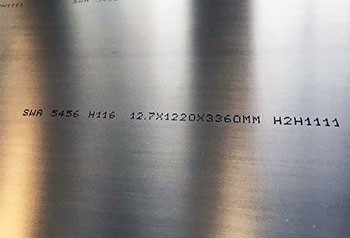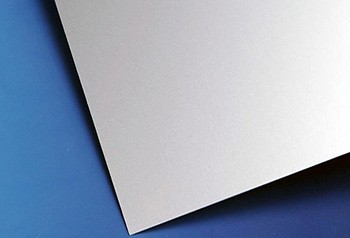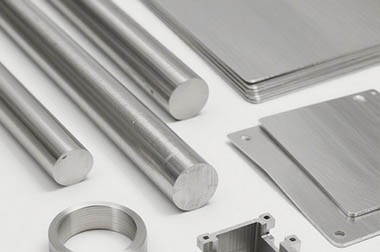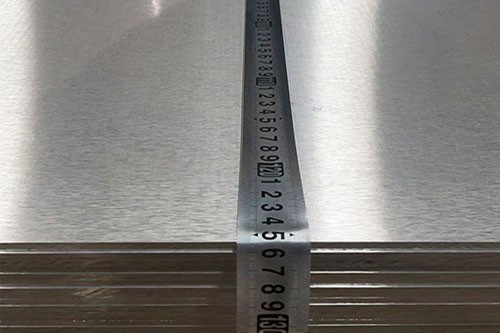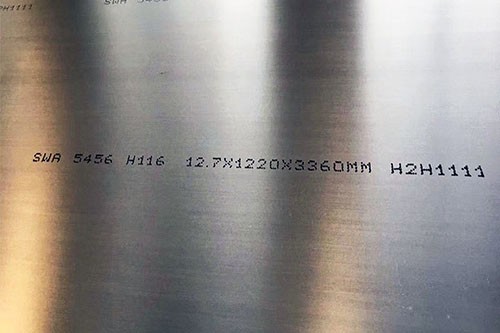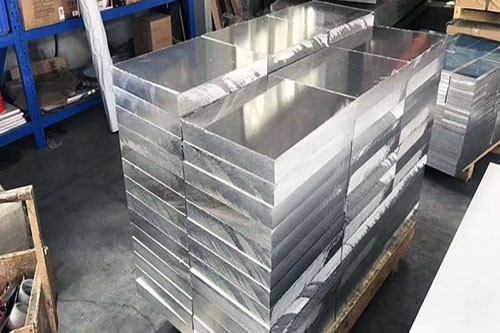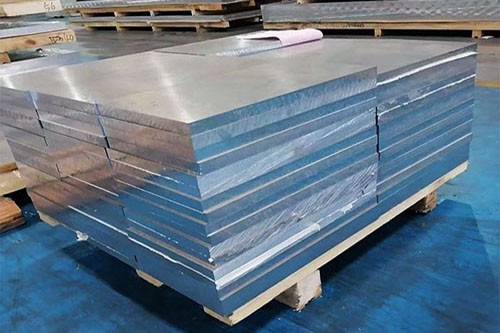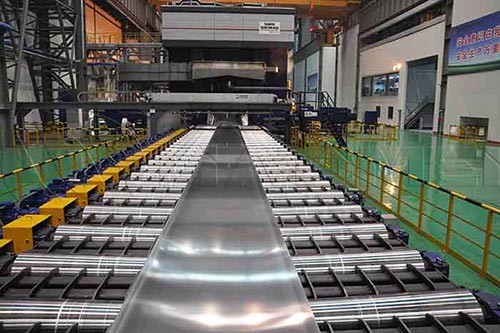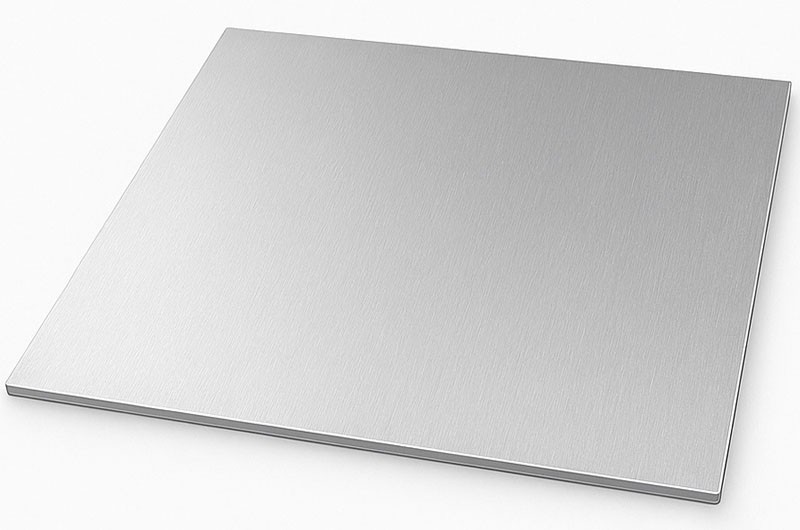5454 5456 5754 Marine Grade Hexagonal Aluminum Bar
Why Choose Haomei Aluminum?
Haomei Aluminum is committed to providing high-quality aluminum materials for marine engineering, shipbuilding, and marine equipment. Our products feature stable performance and reliable quality, and have obtained certifications from multiple internationally recognized classification societies, ensuring the trust and recognition of customers worldwide.
We have been certified by the following international classification societies:
- DNV (Det Norske Veritas)
- CCS (China Classification Society)
- ABS (American Bureau of Shipping)
- BV (Bureau Veritas)
- LR (Lloyd’s Register)
- KR (Korean Register of Shipping)
5454, 5456, and 5754 aluminum hex bars belong to the aluminum-magnesium alloy series and are key materials in the marine and offshore engineering fields. These alloys offer excellent corrosion resistance, medium strength, and good processability, making them especially suitable for use in marine environments. As marine-grade aluminum alloys, they play an indispensable role in shipbuilding, offshore platforms, and other maritime structures.
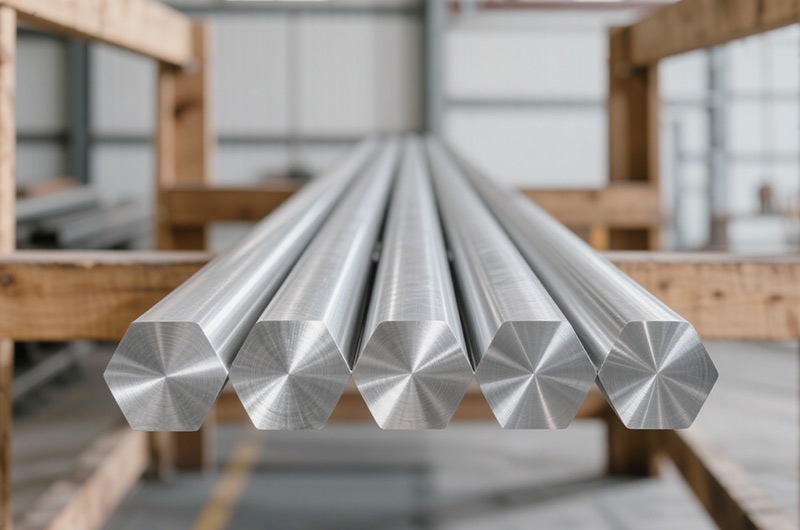
Comparison of 5454 5456 5754 Aluminum Properties
The main alloying element of these three alloys is magnesium, with small amounts of manganese and chromium, providing good corrosion resistance and weldability. The table below compares the basic characteristics of the three alloys:
| Properties | 5454 | 5456 | 5754 |
| Main Alloying Elements | Mg (2.4-3.0%), Mn (0.50-1.0%) | Mg (4.0-5.0%), Mn (0.50-1.0%) | Mg (2.6-3.6%), Mn (0.0-0.50%) |
| Density | Approx. 2.73 g/cm³ | Approx. 2.66 g/cm³ | Approx. 2.73 g/cm³ |
| Melting Point Range | 602–646°C | Approx. 600°C | 600°C |
| Thermal Expansion Coefficient | 23.7 μm/m·K | Approx. 24.0×10⁻⁶/K | 24.0×10⁻⁶/K |
| Typical Tensile Strength | 215–240 MPa | 310–350 MPa | 190–260 MPa |
| Typical Yield Strength | 85 MPa | 110–150 MPa | 80 MPa |
| Elongation | ≥10% | ≥12% | ≥12% |
| Main Features | Medium strength, good corrosion resistance | High strength, excellent corrosion resistance | Good corrosion resistance, high fatigue strength |
Advantages of Marine-Grade 5454 5456 5754 Aluminum Alloys
5454, 5456, and 5754 are classified as marine-grade aluminum alloys mainly due to the following advantages:
- Excellent Seawater Corrosion Resistance Strong resistance to seawater and industrial pollution, making them ideal for marine environments.
- Good Weldability Compatible with various welding methods including TIG and MIG, offering high weld seam strength and low cracking tendency.
- Medium to High Strength Provides sufficient structural strength while maintaining relatively low weight.
- Good Workability Can be processed and formed through extrusion, rolling, and forging.
- High Fatigue Strength Performs well under cyclic loading, suitable for long-term use.
- Recyclability These alloys are 100% recyclable and meet environmental requirements.
5454 5456 5754 Aluminum Material Production Standards and Specifications
The production of 5454, 5456, and 5754 aluminum hex bars follows multiple international and national standards to ensure the quality and performance of the products meet specific application requirements.
ASTM Standards
- ASTM B221: American standard specifying requirements for aluminum and aluminum alloy extruded bars, rods, shapes, and tubes.
- ASTM B211: Specifications for rolled or cold-finished aluminum and aluminum alloy bars and rods.
- ASTM B316: Standard specification for aluminum and aluminum-alloy rivet and cold heading wire and rod.
EN Standards
- EN 755-6:2008: European standard specifying dimensional and shape tolerances for extruded hex bars from 10mm to 220mm in width.
- EN 573-3: Chemical composition standard for aluminum and aluminum alloys.
- EN 515: Standard defining temper designations for aluminum and aluminum alloys.
Other International Standards
- ISO ALMG3: International standard for hot/cold rolled aluminum and aluminum alloy bars and wires.
- GB/T 26006-2010: Chinese national standard for marine-use aluminum alloy extruded tubes, rods, and profiles.
- GB/T 3880-2006: Chinese national standard for aluminum and aluminum alloy sheets and strips.
Classification Society Specifications
For marine-use products, compliance with the specifications of classification societies is also required, such as:
- CCS (China Classification Society) specifications
- ABS (American Bureau of Shipping) specifications
- DNV (Det Norske Veritas) specifications
- GL (Germanischer Lloyd) specifications
These classification society specifications impose strict requirements on chemical composition, mechanical properties, manufacturing processes, and inspection methods to ensure the safety and reliability of materials in ship applications.
Special Industry Standards
In certain specific applications, the following standards may also need to be met:
- AMS (Aerospace Material Specifications): e.g., AMS 4121/2014
- QQ-A-200/7A: U.S. Government Standard
Marine 5454 5456 5754 Aluminum Hex Bar Specifications
| Item Specification | Description |
| Applicable Alloys | 5454, 5456, 5754 |
| Supply Temper | O, H116, H321 |
| Maximum Inscribed Circle Diameter | Standard Specification: Maximum inscribed circle diameter up to 200mm |
| Special Customization: Some manufacturers can provide larger sizes upon request | |
| Note: As the inscribed circle diameter increases, uniformity of material performance in the thickness direction may slightly vary | |
| Length Specification | Standard Length: 1000mm to 12000mm |
| Fixed Length: Customizable based on customer requirements | |
| Random Length: Supplied in random lengths, usually not shorter than the specified minimum | |
| Length Tolerance: In accordance with EN 755-6 or GB/T 26006-2010 standards | |
| Typical Cross-Sectional Size Range (by Inscribed Circle Diameter) | Small: 10mm – 40mm |
| Medium: 40mm – 100mm | |
| Large: 100mm – 200mm | |
| Each size range corresponds to different manufacturing tolerances; generally, the larger the size, the wider the tolerance |
Marine 5454 5456 5754 aluminum hex bar chemical composition
| Element | Composition (%) | ||
| 5454 | 5456 | 5754 | |
| Si | ≤0.25 | ≤0.25 | ≤0.40 |
| Fe | ≤0.40 | ≤0.25 | ≤0.40 |
| Cu | ≤0.10 | ≤0.10 | ≤0.10 |
| Mn | 0.50-1.00 | 0.50-1.00 | ≤0.50 |
| Mg | 2.40-3.00 | 4.70-5.50 | 2.60-3.60 |
| Sn | ≤0.05 | ≤0 .05 | ≤0.05 |
| Zr | ≤0.10 | ≤0.10 | ≤0.05 |
| Cr | ≤0.20 | 0.05-0.25 | ≤0 .30 |
| Ti | ≤0.20 | ≤0.25 | ≤0.15 |
| Al | Remainder | Remainder | Remainder |
Mechanical properties of marine 5454 5456 5754 aluminum hexagonal Bar
| Alloy | Temper | Inscribed circle diameter/mm | Tensile strength/(N/mm2 ) | Specified non-proportional tensile strength/(N/mm2 ) | Elongation after break/% | |
| A | A 50 mm | |||||
| not less than | ||||||
| 5456 | o | ≤12.50 | 285-365 | 130 | - | 14 |
| >12.50-150.00 | 285-365 | 130 | 12 | - | ||
| H112 | ≤12.50 | 300 | 130 | - | 12 | |
| >12.50-150.00 | 300 | 130 | 10 | - | ||
| 5454 | o | ≤12.50 | 200-275 | 85 | - | 16 |
| >12.50-200.00 | 200-275 | 85 | 18 | - | ||
| H112 | ≤12.50 | 180 | 80 | - | 12 | |
| >12.50-150.00 | 180 | 80 | 14 | - | ||
| >150.00-250.0 | 180 | 70 | 13 | - | ||
| 5754 | o | ≤ 150.00 | 180-250 | 8 0 | 1 7 | 1 5 |
| H112 | ≤1 50.00 | 180 | 80 | 1 4 | 12 | |
| >1 50 .0 0 - 20 0.00 | 180 | 7 0 | 1 3 | - | ||
Marine grade 5454 5456 5754 aluminum hex bar dimensional tolerance
Width Tolerance
According to EN 755‑6:2008 standard, the width (inscribed circle diameter) tolerance for marine-grade 5454, 5456, and 5754 aluminum hex bars is shown in the table below:
| Width Range (mm) | Tolerance (mm) |
| >10 to 18 | ±0.22 |
| >18 to 25 | ±0.25 |
| >25 to 40 | ±0.30 |
| >40 to 50 | ±0.35 |
| >50 to 65 | ±0.40 |
| >65 to 80 | ±0.45 |
| >80 to 100 | ±0.55 |
| >100 to 120 | ±0.65 |
| >120 to 150 | ±0.80 |
| >150 to 180 | ±1.00 |
| >180 to 220 | ±1.15 |
Straightness Tolerance
The straightness of marine-grade aluminum hex bars is typically controlled within the following range:
- Standard Straightness: ≤ 0.3 mm/m
- High-Precision Straightness: ≤ 0.5 mm/m
For longer bars, straightness control is especially important, as it directly affects subsequent processing and installation quality.
End-Face Perpendicularity Tolerance
The two end faces of the hex bar should be perpendicular to the axis, and the perpendicularity tolerance is typically controlled within half of the length tolerance range. For example, for products with a fixed-length tolerance of ±5 mm, the end-face perpendicularity tolerance should be within ±2.5 mm.
Camber/Concavity Tolerance
The camber and concavity tolerances of the hex bar should be included within the width tolerance range and must not exceed the specified width tolerance. This ensures that the cross-sectional geometry of the bar meets standard requirements.
Special Tolerance Requirements
For marine or offshore engineering applications with special requirements, manufacturers can provide the following special tolerance controls:
- Precision tolerance: 50% tighter than the standard tolerance
- Unilateral tolerance: allows only positive or negative tolerance
- Critical-point tolerance: tighter control for specific key points
These special tolerance requirements must be specified in the order and may affect product price and delivery time.
Uses of marine grade 5454 5456 5754 aluminum hexagonal bars
Shipbuilding Applications of 5454 Aluminum Hex Bars
5454 aluminum hex bars in shipbuilding are mainly used in the following parts and structures:
- Hull structural components: used as secondary structural parts to provide medium-strength support.
- Ship piping systems: for manufacturing seawater and freshwater pipelines, especially parts that require bending and forming.
- Ship interiors: due to its good machinability and surface treatment characteristics, it is suitable for interior decoration and trim.
- Equipment in low-temperature environments: maintains good strength performance in the temperature range of –65 °C to 170 °C, suitable for certain cold-temperature equipment.
- Pressure vessels: used to manufacture small pressure vessels and tanks.
5454 aluminum hex bar is particularly suitable for ship structural areas requiring extensive welding due to its excellent weldability and medium strength.
Shipbuilding Applications of 5456 Aluminum Hex Bars
5456 aluminum hex bars, with their high strength and excellent corrosion resistance, have broader applications in shipbuilding:
- Primary hull structures: used for hull frames, ribs, and stiffeners in major structural members.
- Deck structures: support structures for decks and frameworks for deck equipment installation.
- Bulkheads and compartments: used for manufacturing watertight bulkheads and compartment structures.
- Ship superstructures: support structures and frameworks of the superstructure.
- Offshore platform structures: supporting structures and connection components of offshore platforms.
- High-strength welded structures: parts requiring high-strength weld seams, such as critical hull connections.
5456 aluminum hex bar is the ideal material for high-strength structural parts in marine vessels, especially where both high strength and corrosion resistance are required.
Shipbuilding Applications of 5754 Aluminum Hex Bars
5754 aluminum hex bars in shipbuilding are mainly used for:
- Ship floor structures: due to its high strength and good wear resistance, it is especially suitable as supports for ship flooring.
- Internal structural components: used to manufacture internal support structures and frameworks.
- Equipment supports: support structures and installation frames for various shipboard equipment.
- Ship ladders and railings: due to its good corrosion resistance and medium strength, it is suitable for making ladders and railings.
- General structures in marine environments: various general structural parts used in marine environments.
5754 aluminum hex bar is especially suitable for applications requiring medium strength and excellent corrosion resistance.
Criteria for Choosing Among 5454, 5456, and 5754 in Shipbuilding
When selecting 5454, 5456, or 5754 aluminum hex bars for shipbuilding, the following factors are considered:
- Strength requirements: 5456 provides the highest strength, suitable for primary structural members; 5454 and 5754 offer medium strength, suitable for secondary structures.
- Corrosion resistance requirements: All three alloys have excellent seawater corrosion resistance, but 5456 may be slightly superior under certain conditions.
- Weldability: 5454 has the best weldability, with almost no tendency for cracking; 5456 and 5754 also have good weldability but require attention to welding process and filler material selection.
- Operating temperature: 5454 maintains good performance in the –65 °C to 170 °C temperature range, making it suitable for some specific temperature environments.
- Cost factor: Generally, 5754 is relatively low-cost, while 5456 is the most expensive.
Common Issues & Solutions
Corrosion Issues
Although 5454, 5456, and 5754 aluminum hex bars have excellent corrosion resistance, corrosion issues may still occur under certain conditions.
Common causes:
- Galvanic corrosion due to contact with dissimilar metals
- Prolonged exposure to polluted seawater
- Damage to surface protection layers
- Crevice corrosion, especially at connection points
- Stress corrosion cracking (may occur only under specific conditions)
Solutions:
- Use appropriate insulating materials to isolate dissimilar metals
- Perform regular cleaning and maintenance to remove surface contaminants
- Apply suitable protective coatings, such as anodizing or painting
- Design to avoid crevices and water accumulation areas
- Select the correct alloy and temper state, such as H116 or H321, to enhance corrosion resistance
- In environments susceptible to stress corrosion, avoid high-magnesium alloys or employ proper stress-relief measures
Welding Issues
Although these alloys generally have good weldability, some issues may still arise during welding.
Common welding issues:
- Softening in the heat-affected zone
- Formation of porosity
- Welding distortion
- Insufficient weld seam strength
- Stress corrosion cracking (especially for high-magnesium alloys)
Solutions:
- Select appropriate welding methods, such as TIG or MIG welding
- Use compatible filler materials; for 5xxx series alloys, fillers from the same series or those with lower magnesium content are typically used
- Control welding heat input to minimize softening of the heat-affected zone
- Preheat before welding and apply slow cooling after welding (for thick-section materials)
- Use appropriate welding sequence and techniques to reduce deformation
- Perform post-weld stress relief treatment (if applicable)
- For high-magnesium alloys like 5456, avoid prolonged use in environments exceeding 150°F
Other Application Fields of 5456, 5454, 5754 Aluminum Square Bars
Diversified Applications of 5456 Marine-Grade Aluminum Square Bar
In addition to marine shipbuilding, 5456 marine-grade aluminum square bars are widely used in several other industries:
- Marine engineering and offshore facilities: 5456 aluminum bars are widely used in offshore platforms, subsea pipelines, and ocean observation equipment due to their excellent corrosion resistance and high strength. These applications require outstanding structural strength and anti-corrosion properties.
- Construction structures: 5456 aluminum bars play an important role in construction, especially in projects with high requirements for corrosion resistance and lightweight design, such as seaside buildings, long-span structures, and roofing systems. Their lightweight and high strength help reduce structural weight and improve seismic performance.
- Cryogenic equipment and containers: As 5456 aluminum maintains good mechanical properties at low temperatures, it is used in various cryogenic equipment and containers, such as LNG tanks, low-temperature pipelines, and refrigeration units.
- Transportation sector: 5456 aluminum bars can be used in structural components of transportation vehicles such as high-speed trains, subway components, and automotive crash structures. Their lightweight characteristics help improve energy efficiency and operational performance.
- Armor and protective equipment: Thanks to their high strength and impact resistance, 5456 aluminum bars are used in manufacturing armor plates and protective gear such as bulletproof vehicles, blast-proof walls, and safety barriers.
- Pressure vessels and piping systems: 5456 aluminum bars can be used in manufacturing various pressure vessels and piping systems, especially in high-pressure and corrosive environments. Their strength and corrosion resistance ensure safe and reliable operation.
Extensive Applications of 5454 Marine-Grade Aluminum Square Bar
With excellent overall properties, 5454 marine-grade aluminum square bars perform well in various sectors:
- Automotive industry: 5454 aluminum bars are widely used in wheels, body structures, and chassis components. Their strength and corrosion resistance help enhance vehicle safety and lifespan, while lightweight properties help reduce fuel consumption.
- Pressure vessels and storage tanks: 5454 aluminum bars are suitable for air tanks, LPG tanks, and chemical storage tanks. Their strength and corrosion resistance ensure safe and reliable performance.
- Architectural decoration: 5454 aluminum bars are used in architectural decorations such as curtain walls, ceilings, decorative moldings, and door and window frames. Their excellent machinability and surface finish capabilities meet aesthetic demands.
- Rail transit: 5454 aluminum bars are applied in structural and decorative components for trains, such as carriage bodies, interior decor, and handrails. Their lightweight nature improves efficiency and performance.
- Chemical equipment and piping: 5454 aluminum bars exhibit good corrosion resistance to organic acids and chemicals, making them suitable for equipment and pipelines in corrosive environments.
- Food and beverage industry: 5454 aluminum bars are used in food processing equipment, beverage storage tanks, and transport containers. Their corrosion resistance and hygienic properties ensure food safety.
Other Applications of 5754 Marine-Grade Aluminum Square Bar
5754 marine-grade aluminum square bars also exhibit excellent performance across multiple industries:
- Automotive industry: 5754 aluminum bars are used for car body panels, fuel tanks, and chassis components. Their lightweight and corrosion resistance enhance fuel efficiency and lifespan. In particular, their lightweight nature contributes to longer battery range in new energy vehicles.
- Construction industry: 5754 aluminum bars are widely applied in roofing, walls, and curtain walls. Their weather resistance and strength meet structural demands, and diverse surface treatments fulfill aesthetic requirements.
- Chemical equipment: 5754 aluminum bars are used for tanks, pipes, and reactors in chemical plants. Their corrosion resistance allows safe use in harsh chemical environments.
- Rail transit: 5754 aluminum bars are used in train carriages and body structures. Their lightweight design enhances efficiency and loading capacity, while corrosion resistance extends service life.
- Pressure vessels: 5754 aluminum bars are ideal for LPG tanks and compressed air cylinders. Their welding performance and strength meet safety requirements under high pressure and variable conditions.
- Aerospace industry: In aerospace, 5754 aluminum bars are used in non-load-bearing structures and interiors such as cabin trim, flooring, and partitions. Their lightweight helps reduce aircraft weight and improve performance.
- Medical equipment: Thanks to corrosion resistance and biocompatibility, 5754 aluminum bars are used in medical beds, surgical tables, and medical carts. Their lightweight and easy-clean features are ideal in medical environments.
Application Scenario Comparison of 5456, 5454, and 5754 Alloys
To provide a clearer comparison of the application differences among the three alloys, below is a comparison of their use in various fields:
| Application Field | 5456 Marine-Grade Aluminum Square Bar | 5454 Marine-Grade Aluminum Square Bar | 5754 Marine-Grade Aluminum Square Bar |
| Marine Engineering | Offshore platform structures, subsea pipelines, ocean observation equipment | Marine facility piping, seawater treatment equipment | Platform decks, marine instrument housings |
| Construction | Seaside structures, large-span roofs, curtain wall frameworks | Decorative moldings, window and door frames, ceilings | Curtain walls, roof structures, decorative panels |
| Transportation | High-speed train bodies, subway components, automotive crash structures | Car wheels, body structural parts, chassis components | Body panels, fuel tanks, train carriages |
| Energy Equipment | Cryogenic tanks, LNG containers, high-pressure pipelines | Chemical equipment piping, reactors, storage containers | Pressure vessels, LPG tanks, compressed air tanks |
| Industrial Equipment | Armor protection gear, safety barriers, explosion-proof structures | Food processing equipment, beverage tanks, transport containers | Chemical equipment, medical devices, aerospace interior components |
| Daily Use | Premium furniture frames, art piece frames, special decorative parts | High-end kitchenware, furniture trim, decorative structural components | Furniture panels, decorative moldings, premium home goods |
Selection Guide for 5454, 5456, and 5754 Aluminum Hexagonal Bars
Based on specific application requirements, the general guidelines for selecting 5454, 5456, or 5754 aluminum hexagonal bars are as follows:
Strength Requirements
- Low to medium strength requirement: Consider 5754
- Medium to high strength requirement: Consider 5454
- High strength requirement: Choose 5456
Corrosion Resistance Requirements
- General marine environment: All three alloys are suitable
- Harsh marine environment or high-stress conditions: Prefer 5456
- Moderate corrosion environment: Consider 5754
Welding Requirements
- Extensive welding or complex welded structures: Prefer 5454
- High-strength welded structures: Choose 5456 and pay attention to the welding process
- Moderate welding requirements: All three alloys are suitable
Temperature Requirements
- Operating within 65°C to 170°C: Prefer 5454
- Room temperature environment: All three alloys are suitable
- Low-temperature environment: 5454 may be more suitable
Cost Considerations
- Limited budget: Prefer 5754
- Performance-oriented: Choose 5456
- Balanced performance and cost: Consider 5454
Machining Difficulty
- Complex or precision machining: Prefer 5454
- Simple machining: All three alloys are suitable
- High surface quality requirement: Take extra care with surface protection of 5754
Recommended for you
-
5456 5454 5754 Marine Grade Aluminum Bar has certification from CCS, DNV, NK, CCS, ABS, BV, LR, KR and other classification societies, and its quality fully complies with world marine grade standards.
-
The quality of 5754, 5456, and 5454 marine-grade aluminum round bars fully meets the ship classification standards worldwide: CCS, DNV, NK, ABS, BV, LR, KR.
-
As outstanding representatives of the Al-Mg series alloys, 5456, 5454, and 5754 marine-grade aluminum square bars each have unique performance advantages and application scenarios.
Other content readers are interested in
-
5456 Marine Grade Aluminum Plate Sheet
5456 marine grade aluminum plate is an economical choice for ship construction. Can be used on baseboards, decks and other upper fittings.
-
5754 Marine Grade Aluminum Plate Sheet
5754 marine grade aluminum plate is an aluminum alloy designed specifically for marine applications with excellent corrosion resistance and high strength.
-
5456-H111 aluminum alloy is commonly used in the marine and shipbuilding industries, particularly in environments that require resistance to seawater corrosion.
-
5456-H112 aluminum alloy is a cold-processed and heat-treated aluminum alloy, primarily used in fields that require high corrosion resistance and moderate strength, such as the marine and shipbuilding industries.
-
5456 aluminum alloy is a high-strength aluminum alloy widely used in marine, shipbuilding, offshore engineering, and other corrosion-resistant structural components.
-
5456 H32 aluminum alloy is widely used in the marine and shipbuilding industries. It has good corrosion resistance and is suitable for anti-corrosion structural components in seawater environments.
-
5456 H321 aluminum alloy is a high-strength aluminum alloy primarily used in the marine and shipbuilding industries, especially for corrosion-resistant structures in seawater environments.
-
5456 O aluminum alloy is a state of the 5456 series, referring to the aluminum alloy that has been fully annealed (O state).
-
5754 aluminum sheet is a non-heat-treatable alloy in the 5xxx series, with magnesium as its main alloying element. It is well-known for its excellent corrosion resistance, high strength, and good weldability, making it suitable for a wide range of industrial applications.
-
AW 5754 H111 refers to a specific aluminum-magnesium alloy in the 5000 series, known for its excellent corrosion resistance, medium strength, and good weldability.
Recommended for you
-
5052 marine aluminum alloy is a high-strength, corrosion-resistant, easy-to-process and weld aluminum alloy, which is widely used in the manufacture of ships and marine structures.
-
5059 aluminum is both a high-magnesium and high-zinc alloy, offering excellent corrosion resistance and fire resistance.
-
5086 aluminum alloy is irreplaceable in hull and deck applications in marine operating environments due to its unique seawater corrosion resistance, excellent low-temperature toughness, and good weldability.
-
5083 is basically used to manufacture ship hulls because of its relatively high strength and good corrosion resistance.
-
5383 aluminum offers excellent fatigue resistance and crack resistance, and its unique properties make it irreplaceable in the design of high-speed vessels and marine structures that require long-term fatigue resistance.
-
5754 aluminum is a medium-to-high strength alloy with excellent weldability, a low tendency for welding cracks, and high strength in both the weld joint and the crystalline metal.
-
5456 aluminum, with its unique high strength, exceptional fatigue resistance, and resistance to stress corrosion cracking, is irreplaceable in heavy-duty hull structures.
-
5454 aluminum alloy not only possesses excellent corrosion resistance, but its unique high-temperature stress resistance makes it irreplaceable in welded structures for ship fuel tanks and high-temperature environments.
-
6061 marine aluminum has good corrosion resistance, high strength, good machinability and welding performance, and is suitable for marine structural parts.
-
6082 has medium strength and good corrosion resistance, while being lightweight, making it an ideal material for manufacturing components of high-speed vessels.
More content of interest to readers
5456 Aluminum Properties 5049-H24 Aluminum vs. 5754-H24 Aluminum 5754-H14 Aluminum vs. 5754-H22 Aluminum 5754-H22 Aluminum vs. 5754-H32 Aluminum 5754-H28 Aluminum vs. 5754-O Aluminum 5383-O Aluminum vs. 5456-O Aluminum 5383-H32 Aluminum vs. 5456-H32 Aluminum 5383-H111 Aluminum vs. 5456-H111 Aluminum 5383 Aluminum vs. 5456 Aluminum 5383-H112 Aluminum vs. 5456-H112 Aluminum 5456-H116 Aluminum vs. 5456-H32 Aluminum 5086 Aluminum vs. 5456 Aluminum 5456-H112 Aluminum vs. 5456-H116 Aluminum 5456-H111 Aluminum vs. 5456-H116 Aluminum The application of 5456 aluminum plate in shipbuilding Marine grade aluminum 5052 5454 plate for shipbuilding
You might be interested in: Marine Aluminum 5454 Marine Aluminum 5456 Marine Aluminum 5754

